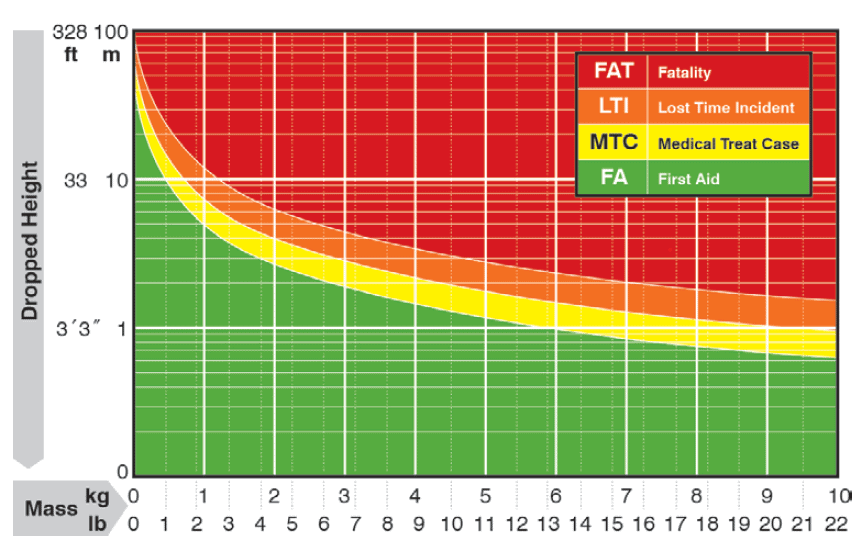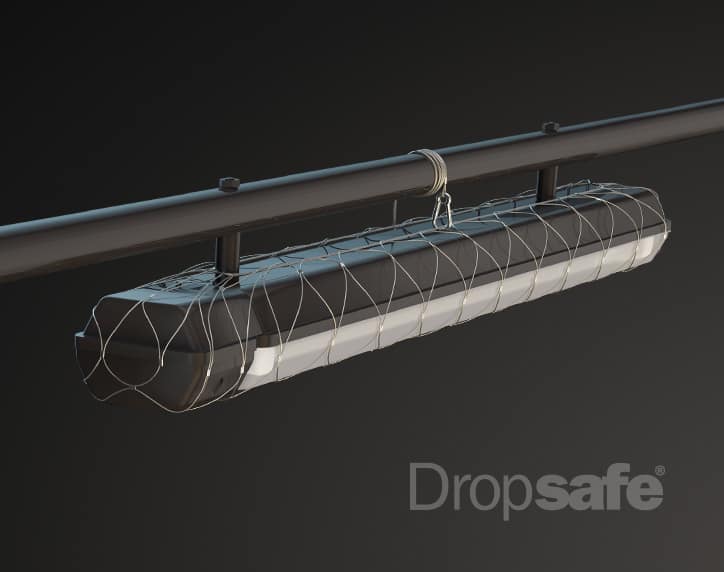Dropped Object Risks:
An Introduction
Dropped Objects can be any items that fall from above, damaging equipment, injuring personnel, and potentially causing financial, reputational and in some cases, legal consequences.
Dropped Objects continue to present significant safety challenges in all operational activities across a wide range of industries, both on- and offshore. There are more than 50,000 reported OSHA incidents each year in the US due to workers being struck by falling objects, and data from DROPS Online shows that the majority of high potential (Hi-Po) incidents can be attributed to dropped objects.
Many factors contribute to the high number of items falling from height, including the incorrect tethering of tools and equipment, lack of secondary retention of fixtures such as lights, non-adherence with lifting procedures, environmental challenges, human behaviour and inadequate design.

DROPS Calculator (above)
Endorsed by DROPS, the DROPS Calculator it is one of the most common tools used to calculate the impact to peronnel safety objects dropping from height can cause. While other ‘calculators’ exist, they all follow the same principle: Plotting the mass of a dropped object against the distance it falls to determine its possible consequences – even a 3lb hammer falling from 30 feet can result in a fatality.
Drops Programmes
Companies require comprehensive Drops Programmes to enable them to deal with and elminiate risks dropped object incidents can cause, while embracing the requirement for worksite hazard management and secondary retention and securing best practice.


